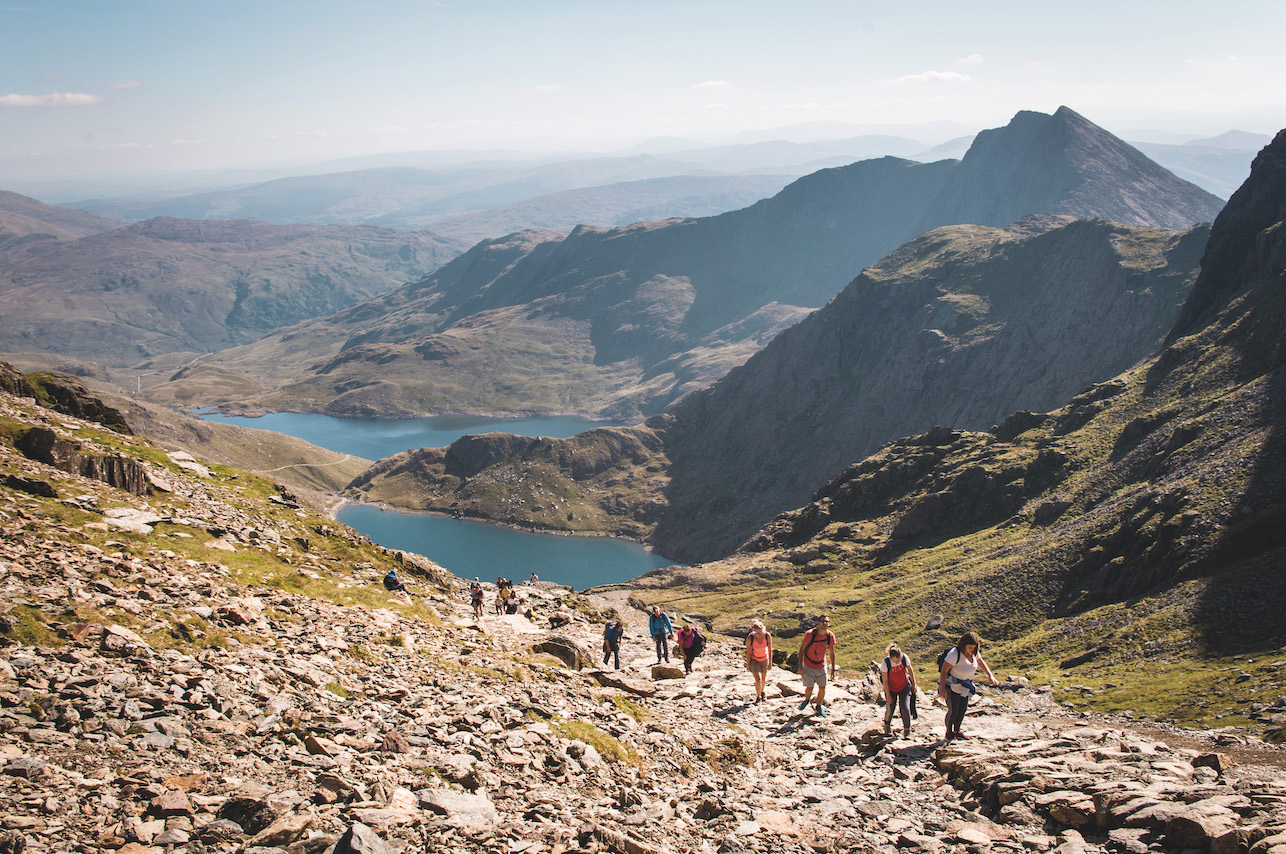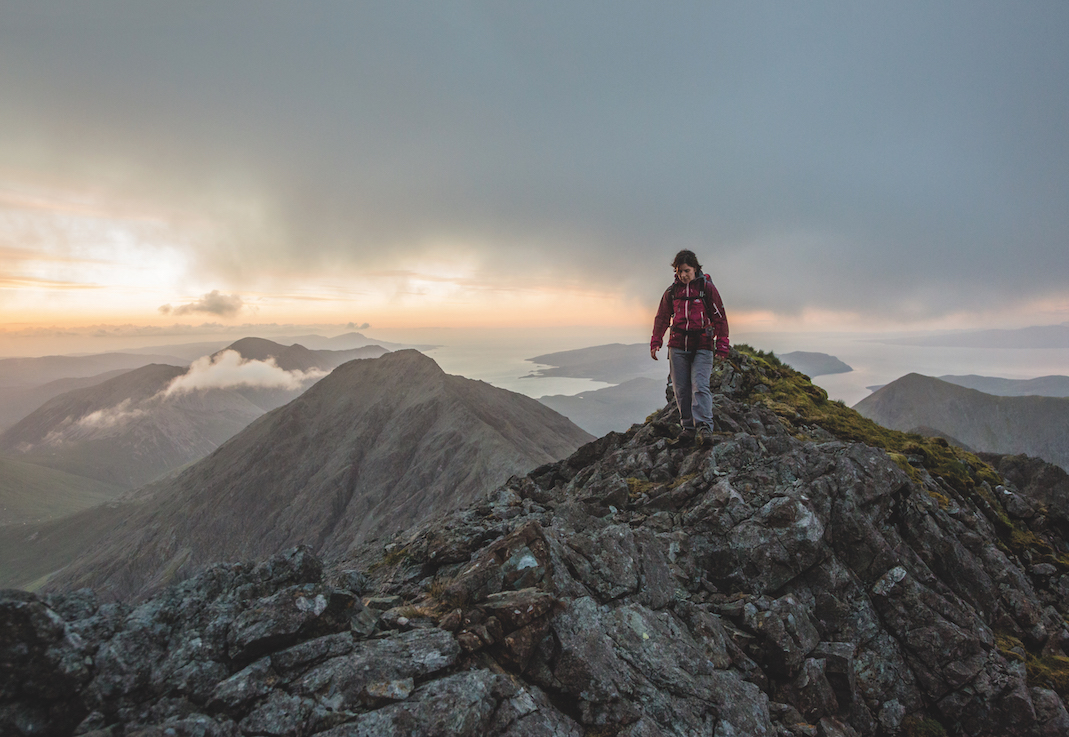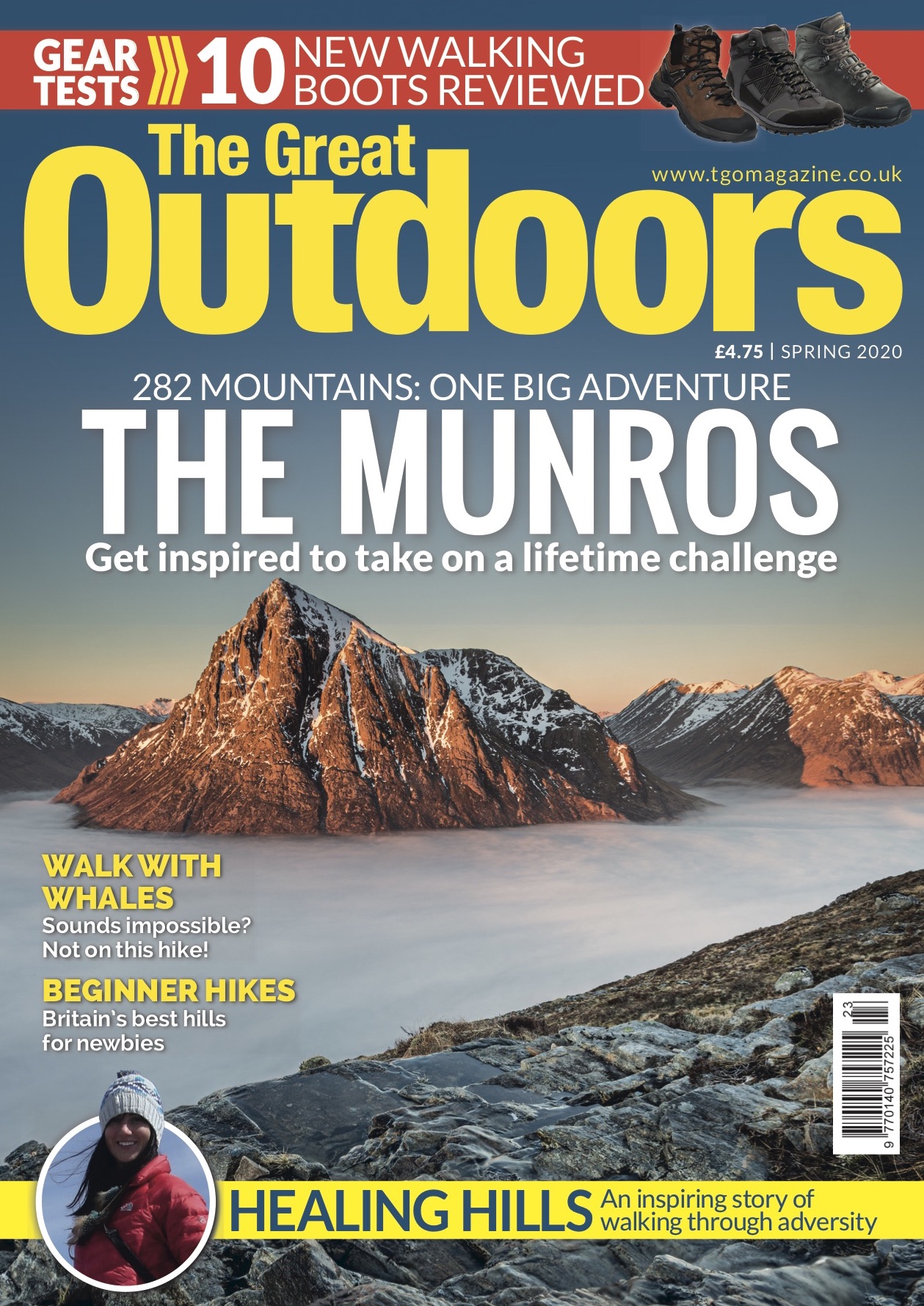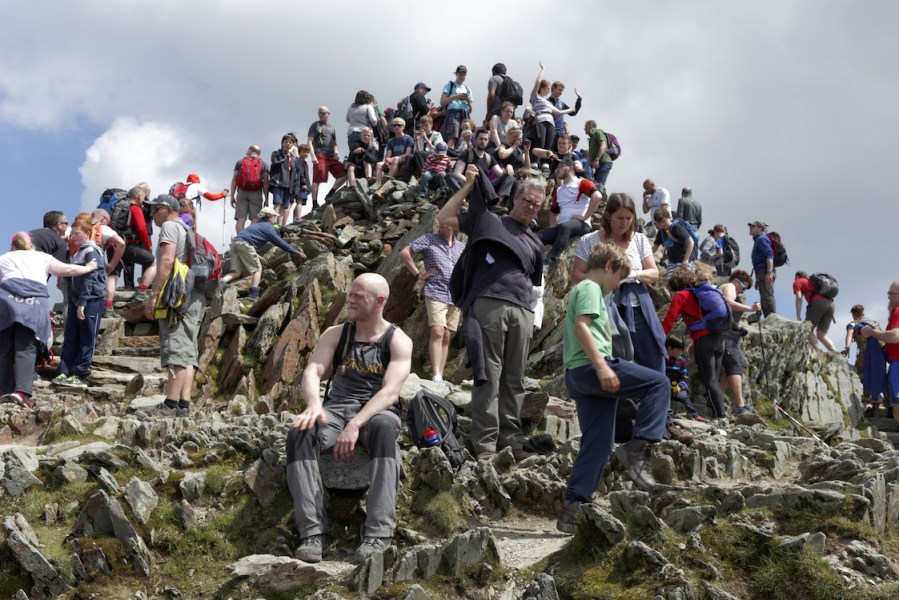From avoiding a “mad rush” to the hills, to developing PPE that works for mountain rescuers, returning to the outdoors after lockdown could be complicated. We spoke to some the organisations wrestling with the challenges – and possible solutions.
Header image: summer crowds on the summit of Snowdon. Photo: Shutterstock
The weekend before Britain’s lockdown measures were first announced, beauty spots all over the country were swamped by an influx of tourists. Photos of emerged of parked cars snaking down Pen-y-Pass and crowds cramming onto Lake District honeypot summits. With indoor activities either out of limits or deemed too hazardous, people were doing what probably seemed sensible at the time: looking for their recreational kicks in the great outdoors.
That was nearly six weeks ago, back when most of assumed that lockdown would be a month or so’s hiatus from the hills before life quickly returned to normal. It’s become increasingly apparent that things are more complicated. The UK government is under pressure to release a lockdown escape plan with daily deaths still in triple figures – so how exactly will that work? More pressingly for the walkers amongst us, how will it work in relation to the outdoors?
“It’s going to be really complex,” says Heather Morning, Mountain Safety Advisor at Mountaineering Scotland. “We all started out assuming we were looking at perhaps three weeks of shut down before we were all back in the hills again. Now, without a vaccine in place – which doesn’t look to be any time soon – it’s hard to see how we are going to return to anything like normality.”
Outdoors before indoors
Last week, mooting plans for an “incremental” return to normal life, First Minister Nicola Sturgeon hinted that outdoor activities could be permitted sooner than indoor pursuits. Her comments caused both excitement and consternation in the outdoors community.
“It makes sense, because potentially you can socially distance in the outdoors if you approach it in the right way – particularly in Scotland” says Damon Powell, Chair of Scottish Mountain Rescue. “We would be delighted if it’s deemed safe for people to be back in the hills, but it does present quite a few challenges for us.
“My great concern is that the outdoors will open up before any other sporting facility and that it will then be boom time – not just for the people waiting to get out there but potentially for everybody else as well. If we get a whole stack of people with no skill set, there’s a risk that the number of rescues goes through the roof.”
To complicate things further, it’s likely that the advice for when and where people can enjoy the outdoors will differ across Britain. The Welsh first minister, for instance, has said he is ready to move the country out of lockdown earlier than the rest of the UK. This could present further challenges for mountain rescue teams.

Foot traffic on Snowdon on a sunny day, pre-lockdown. Photo: Shutterstock
“If the Welsh plan has a different timeline, let alone different conditions, then that’s going to be a big problem,” says Mike Margeson, Operations Director at Mountain Rescue England & Wales. “They need to be planning collectively and not giving out mixed messages to the public.”
The threat to mountain rescue
If there is a mass return to the outdoors, mountain rescue teams will be on the front line. This is a concern for volunteers, who are attempting to adapt tried-and-tested approaches to an unfamiliar new world.
“We’re asking teams to operate in an environment that they haven’t trained for because we can’t regroup to train at the moment,” says Damon. “You can’t maintain social distancing in a rescue.
“The other challenge is that the Personal Protective Equipment (PPE) out there is designed for a clinical environment rather than an outdoor environment. If you try to do anything physical in a mask you basically can’t breathe, so the effectiveness of it in the hills isn’t great. Gloves tend to split and aprons are a non-starter”.
Waterproofs and goggles have been mooted as a PPE substitute, he says, but decontaminating reusable kit can be a three-to-four-day process. And there are other risks involved as well – both to mountain rescue teams and to the walkers who call on them.
“Every team has fewer people on their call-out list because of people ill or self-isolating,” says Mike. We have no air ambulances because they’ve been stood down or they’re needed for other things, so in the cases where we would previously have been able to get air assistance we’re looking at a much longer carry. There are also some things – such as CPR – that we just won’t be able to do.”
Mountain Rescue leaders are keen to emphasise that telling people what they can and can’t do isn’t part of their remit – but it’s clear that providing rescue teams with the right support, equipment and advice will be crucial in any reopening of the outdoors.
Outdoor super-spreaders?
There are other issues to be overcome when the outdoors opens again to walkers.
“The two big challenges that emerged at the start of the crisis were people maintaining physical distancing, particularly in popular beauty spots, and the threat of people spreading the virus in vulnerable rural areas,” says Tom Platt, Director of Advocacy and Engagement at the Ramblers. “These are likely to remain the key challenges to people returning to the outdoors.”
Concerns among remote communities that ‘super-spreader’ walkers will place them in jeopardy have led to discouraging signs, confrontations and even full-on fights.
“We have to be mindful of the reaction from local communities,” says Stuart Younie, CEO of Mountaineering Scotland. “They were really concerned about lots of people coming to their area increasing the risk of transmission and putting pressure on the infrastructure, so we have to be careful and respectful about how we phase our return to the outdoors, possibly as a staged approach.”
What’s the solution?
The key preoccupation for most outdoor organisations is avoiding a “mad rush” for the hills when lockdown restrictions begin to ease. Several sources – including the Lake District National Park, Scottish Mountain Rescue and Mountain Rescue England and Wales – told The Great Outdoors that they are already collaborating on a cross-industry basis to come up with answers to this problem.
“Conversations are currently ongoing with outdoor sports in Scotland – and I understand also in England and Wales – and a phased/ staged approach based on an evaluation of risk is under discussion in Scotland,” added Stuart.
Scottish Mountain Rescue is working in conjunction with Glenmore Lodge on how people might plan a post-lockdown day. And some possible solutions were also mooted.

A hillwalker on Skye. Photo: Dougie Cunningham
“We’re hoping that the government will put in place a staged process for lifting the lockdown,” said Mike. “One possibility could be that people will initially be restricted to travelling within their own region, which might help limit the numbers at popular honeypots.”
Heather pointed out that a dearth of available accommodation could naturally ease the strain on remote regions.
“Most people access the hills through campsites and B&Bs,” she pointed out. “I can see accommodation providers being one of the last sectors to reopen, which could limit the numbers we see on the hill.”
Devising a plan for how the outdoors can safely reopen is a major challenge. Perhaps the biggest hurdle, though, is communicating this plan to the public.
“We’ve already seen how hard it is to communicate clear and consistent messages during the lockdown and this will become even more challenging should there be a phased lifting of restrictions” says Tom. “What’s important going forward, is that the government provide very clear guidance to both walkers and land managers about what they can and cannot do.”
Make indoor time better with The Great Outdoors
During the lockdown, we’re continuing to work (from home!) to produce content that will help you keep your outdoor spirit alive. Even though you can’t go physically go to the hills and mountains, we aim to take you there with our words and images, and perhaps conjure some of the feelings they inspire.
To show our readers our gratitude for their support at this time, current subscribers have had their subscriptions upgraded to include free access to the digital edition of the magazine.
To give you some great reading material for these indoor days, we’re also offering new readers:
- Three issues of the magazine along with the accompanying digital editions for £9.99 plus free postage, with no ongoing commitment to subscribe.
- Full subscriptions at just £15 for your first six issues.
- Or, if you want to catch up on content you may have missed, you can buy individual back issues with free postage and packaging.
Stay home, stay safe, and see you on the hills when the day comes!







